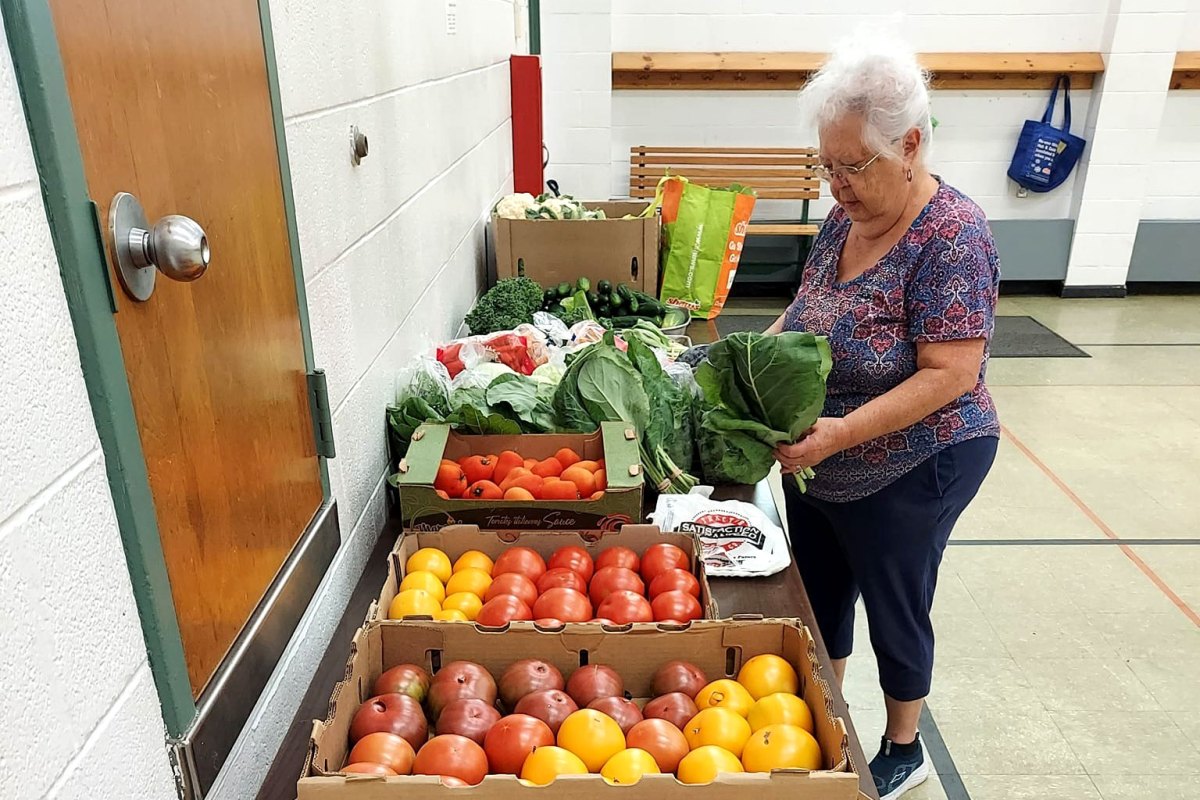
The Holland Food Shelf announced Tuesday it would close its doors the last week of September, citing the loss of federal nutrition assistance funds and high rent costs as major factors in the decision.
“We can’t do it without funding,” said Don Stevens, executive director of the pantry’s nonprofit operator, Abenaki Helping Abenaki, and chief of the Nulhegan band of the Coosuk Abenaki Nation. “It’s not just us, right?” he added, referencing Vermont Foodbank’s recent cuts in addition to other struggles in the state’s food assistance network.
The food pantry has served residents in and around Holland, a town sitting on the Northeast Kingdom’s border with Canada, since 2021. This year, Stevens said, demand had reached a peak, with the pantry sometimes serving nearly 700 people per month. Now, as the organization winds down, residents and advocates are concerned its absence will leave a vulnerable and rural part of the state without enough support.
Stevens said he hopes the month of continued service will allow participants time to transition to other providers. His organization had started the food pantry to “help as many as we can,” he said. His team also has been purchasing food from local farmers and participating in gleaning efforts in the NEK.
The organization had lost several other federal income streams in the past, Stevens said, but the most recent decisive setback was the loss of $25,000 in SNAP-Ed, or Supplementary Nutrition Assistance Program Education, grants starting next year. The money would have gone to food purchases, outreach, training and wages, but was eliminated with the passage of the One Big Beautiful Bill Act on July 4.
“(SNAP-Ed) has helped low-income Vermonters develop skills and understanding about how to access, use, and prepare nutritious food, and helped families eat healthy meals on a budget,” Kyle Casteel, a spokesperson for the Vermont Department of Health, wrote in a statement Thursday.
“The funding loss is impacting important projects and initiatives that are carried out by valued partners across the state,” the statement continued.
The two paid employees of the pantry will be laid off, Stevens said.

“We had no choice,” he said.
Abenaki Helping Abenaki is a nonprofit with the primary mission of providing programs and services for the Nulhegan band of the Coosuk Abenaki Nation and “other native people,” Stevens said. That work will continue.
“We are still feeding our tribal community,” Stevens said, though the public food pantry will close.
The Holland Food Shelf has worked with Vermont Foodbank, which had recently been providing the organization with roughly 10,000 pounds of food per quarter, according to the food bank’s government and public affairs manager, Carrie Stahler. Before the end of pandemic-era nutrition assistance programs that lowered the cost of food for local providers, she said, the food bank had provided even more.
The northern portions of Orleans and Essex counties are areas of the state that have proven especially challenging for Stahler’s organization to reach, she said, due to the distance involved in delivery and a relative scarcity of local organizations to partner with.
“One of the issues that we as a state struggle with regularly is service delivery to very rural communities,” she said.
Vermont Foodbank can’t work alone, Stahler said.
“Those organizations are absolutely critical,” she said of local food pantries like the one in Holland. “They are the ones who neighbors see and know.”
She anticipates that the Holland Food Shelf’s closure will force residents to drive farther for help and put more strain on regional assistance providers.
Marci Diamond, a local resident who has volunteered at the Holland Food Shelf, echoed Stahler’s concerns.
“It’s a very rural, very isolated community,” she said.
Diamond said many locals who frequented the organization were veterans, young families and sometimes farmers “who grow food, and still can’t afford to feed themselves and their families.”
Diamond also noted there was no grocery store in Holland.
“Not everybody has the ability to drive,” she said.
Trevor Gray, chair of the Holland Select Board, said the town was in a tough position when it requested a higher rent from the food pantry. He said the operational costs for the building surpassed the income the tenants generated by over $30,000.
Nonetheless, he said, the board was “extremely disappointed” that an agreement could not be made to continue the food pantry’s operation. He said he understood that Stevens’ nonprofit was under a great deal of pressure from federal cuts, but added that “it’s just unfortunate for the people that utilize that service.”
Stahler said relying on small local budgets for food assistance can be problematic.
“There’s an overeliance on tiny community organizations to really fulfill the basic needs of their neighbors,” she said. “How do we fill that gap? … That is a really difficult question.”

